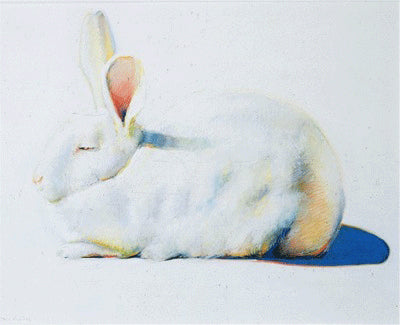What is Negative & Positive Space
Negative/Positive space can be a dominant aspect of good design. It can turn an average design into a "Wow" piece!
Negative space can be an outstanding tool for creating visual excitement because it doesn't rely on the subject matter. When people first become involved in the visual arts, the subject matter (positive space) is often seen as the most important part of a composition. Sometimes this is taken to such an extent that the artist will completely omit the background to avoid resolving the design's negative space.
When working with negative space, consider the shape (square, rectangle, etc.) of the picture plane and the silhouettes of the positive space—worked simultaneously, the negative and positive space become integrated and critical in creating compositional tension or harmony.

Negative / Positive space has a shared edge. The edge is where two things meet (for example, where the sky meets the ground). The edge or line of separation is between two shapes or space and shape.
Three Types of Negative / Positive Space
The three negative/positive spaces types are:
- clearly defined
- integrated
- ambiguous
Please note that the term clearly defined (negative/positive space) is one I use. I like clarifying the differences between clearly defined negative/positive spaces. Textbooks often refer to clearly defined negative/positive space as negative/positive space, which can confuse those new to the concept.
Clearly Defined Negative / Positive Space
The subject is clearly defined from the background. The viewer has no difficulty telling the background (negative space) from the subject (positive space). The next three images are excellent examples of this type of negative/positive space.



Visual Information
To understand how integrated negative/positive space works, you need to understand the concept of visual information.
This rule states that humans need to have enough visual information for the brain to figure out what is going on in an image. Let's see what happens when you lack enough visual information.
What is the shape that you see in the image below?

Most people agree they see triangle in the negative space. This is because there was enough visual information for the brain to make the connection.

The brain no longer sees the complete triangle when you remove essential visual information by deleting a circle. This demonstrates the importance of having enough visual information for the viewer to understand what is going on in the image, painting, design, etc.
Integrated Negative/Positive Space
The areas of the negative/positive space seem to merge in places. Still, there is enough visual information about the negative and positive space for the viewer to distinctly tell the difference between the two.

The areas of the negative/positive space seem to merge in places. Still, there is enough visual information about the negative and positive space for the viewer to tell the difference between the shape of her head (positive space) and the dark background (negative space).
Below are two additional examples of integrated negative/ positive space.


Feelings that can be associated with this type of negative/positive space are foggy, mysterious, uncertain, etc.
Ambiguous Negative / Positive Space
In Ambiguous Negative/Positive Space, the viewer is unable to distinguish the negative space from the positive space. This negative/positive space is commonly used in fine arts, wallpaper, and fabric design.

On an unconscious level, these feelings that can be associated with this type of negative/positive space are chaos, motion, high energy, uneasiness, etc.
Partial Ambiguous Negative/Positive Space
We will not be studying this Negative/Positive Space, but I want to make you aware. In a partially ambiguous negative/positive space, only a section of the negative/positive space is ambiguous. In the image below, the center section of black and white birds and plots of the fields are ambiguous.
 Day and Night, by M. C. Escher, 1938 (Escher in Het Paleis)
Day and Night, by M. C. Escher, 1938 (Escher in Het Paleis)
Logo design is where designers commonly use partial-ambiguous negative/positive space. The Fed Ex logo is famous for its arrow formed in the negative space (filled in in the bottom example). 
Credits: Some of the information in this presentation comes from the book Design Basics, Seventh Edition by David Lauer

